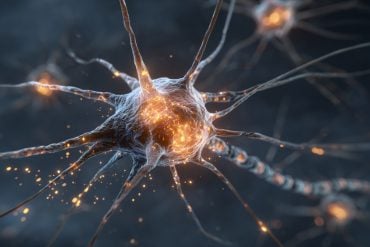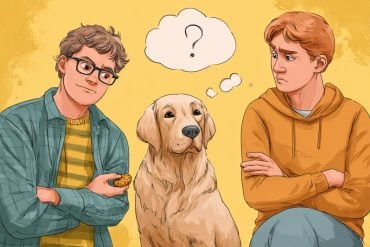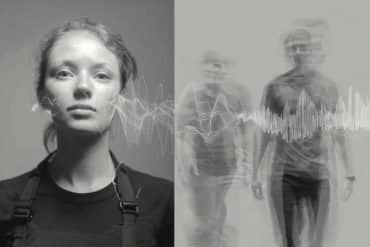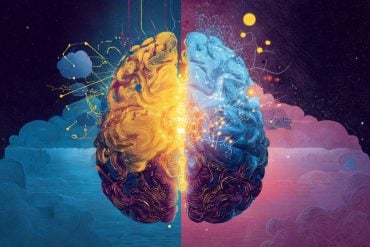Summary: Where and when grandparents and parents of children were born could contribute to an increased risk of ASD in their offspring.
Source: University of Utah
When and where are often vital clues for epidemiologists, the medical detectives who help solve the underlying mysteries of disease. The technique dates back to at least 19th century London, where a physician named John Snow mapped cholera deaths and traced the source of the outbreak to a single well in the city. Once the well was closed, the epidemic ended.
Taking this idea to a new level, University of Utah Health scientists, using a unique combination of geographic and population data, recently concluded that when and where parents and grandparents of Utah children were born and raised could contribute to an increased risk of autism among their offspring.
The scientists think this new approach could be used to explore time and space aspects of any disease where family pedigree information is available.
The study, published in the International Journal of Health Geographics, is among the first to assess the influence of time and space (when and where) across generations on the increased risk of autism.
In time, the researchers say, this finding could lead to the identification of environmental factors, such as exposure to pollutants, that could have disruptive effects on genetic information passed between generations.
“Looking back at families and where and when they lived helped us detect clusters of individuals who seem to have a higher subsequent risk of autism among their descendants,” says James VanDerslice, an environmental epidemiologist in the Division of Public Health at U of U Health and senior author of the study.
“Knowing that the parents and grandparents of these children with autism shared space and time brings us closer to understanding the environmental factors that might have influenced this health outcome.”
Epidemiological studies across generations are difficult and time-consuming, says Rebecca Richards-Steed, the study’s principal investigator and graduate student in the Department of Geography at University of Utah. In fact, most of these studies have been done in animals, which reproduce quickly and can be followed for several generations in a shorter time span than humans.
Using existing technology in a new way, VanDerslice and Richards-Steed circumvented this drawback by looking at existing data available for parents and grandparents to identify places and time periods that may be associated with risk factors that increased the risk of disease in subsequent generations.
The researchers used the Utah Registry of Autism and Developmental Disabilities, in conjunction with the Utah Population Database (UPDB), to identify parents and grandparents of children born between 1989 and 2014 who have autism.
Birth certificates, driver’s license information, and census and medical records in the UPDB helped the scientists track when and where these individuals lived over time. The UPDB is one of the few databases worldwide to include this type of information.
For comparison, they randomly selected parents and grandparents of children in the UPDB database who were not diagnosed with autism. Names of the individuals were withheld from the researchers.
In all, VanDerslice and colleagues pinpointed where 7,900 parents and 31,600 grandparents were born and raised. They identified 20 key clusters, or groupings, scattered across the state. After analysis, 13 of the 20 clusters—nine among grandparents and four among parents—were associated with an elevated risk of autism in their children or grandchildren. In particular, descendants of paternal grandparents were about three times more likely to have autism than expected.
“What we were seeing fits in with current scientific understanding of how paternal genetics is key to evolutionary change and adaptation,” Richards-Steed says. “So, it is quite possible in the case of autism that a signal, shaped in part by environmental experiences, is coming from the paternal lineage, which is being passed down through the family.”
Seven clusters, all in rural areas, had a low risk of an association between autism and family lineage.
“We’re really not sure why some rural areas seemed to have what might be called a protective effect,” Richards-Steed says. “It’s certainly possible that parents and grandparents living in urban areas had different environmental exposures or experiences.”
“What we can say, based on our findings, is what we are being exposed to now is probably not just affecting us or even our children but maybe even our children’s children.”

Moving forward, the researchers will delve deeper into the factors, including lifestyle, that could help explain these results.
“Evidence shows our environment has a deterministic effect on our growth and development, which includes the germline cells we carry for the next generation,” VanDerslice says.
“Examining the shared space and time of our ancestors may give us clues about the environmental factors that may lead to biological changes that increase the risk of disease in future generations. “
The scientists think this new approach could be used to explore time and space aspects of other conditions where family pedigree information is available.
“This idea isn’t limited to autism,” Richards-Steed says. “It can be applied to any disease and could enhance our ability to understand how a confluence of genetic and environmental factors can have long-term health consequences for families.”
About this autism research news
Author: Press Office
Source: University of Utah
Contact: Press Office – University of Utah
Image: The image is in the public domain
Original Research: Open access.
“Evidence of transgenerational effects on autism spectrum disorder using multigenerational space-time cluster detection” by Rebecca Richards Steed et al. International Journal of Health Geographics
Abstract
Evidence of transgenerational effects on autism spectrum disorder using multigenerational space-time cluster detection
Background
Transgenerational epigenetic risks associated with complex health outcomes, such as autism spectrum disorder (ASD), have attracted increasing attention. Transgenerational environmental risk exposures with potential for epigenetic effects can be effectively identified using space-time clustering. Specifically applied to ancestors of individuals with disease outcomes, space-time clustering characterized for vulnerable developmental stages of growth can provide a measure of relative risk for disease outcomes in descendants.
Objectives
(1) Identify space-time clusters of ancestors with a descendent with a clinical ASD diagnosis and matched controls. (2) Identify developmental windows of ancestors with the highest relative risk for ASD in descendants. (3) Identify how the relative risk may vary through the maternal or paternal line.
Methods
Family pedigrees linked to residential locations of ASD cases in Utah have been used to identify space-time clusters of ancestors. Control family pedigrees of none-cases based on age and sex have been matched to cases 2:1. The data have been categorized by maternal or paternal lineage at birth, childhood, and adolescence. A total of 3957 children, both parents, and maternal and paternal grandparents were identified. Bernoulli space-time binomial relative risk (RR) scan statistic was used to identify clusters. Monte Carlo simulation was used for statistical significance testing.
Results
Twenty statistically significant clusters were identified. Thirteen increased RR (> 1.0) space-time clusters were identified from the maternal and paternal lines at a p-value < 0.05. The paternal grandparents carry the greatest RR (2.86–2.96) during birth and childhood in the 1950’s–1960, which represent the smallest size clusters, and occur in urban areas. Additionally, seven statistically significant clusters with RR < 1 were relatively large in area, covering more rural areas of the state.
Conclusion
This study has identified statistically significant space-time clusters during critical developmental windows that are associated with ASD risk in descendants. The geographic space and time clusters family pedigrees with over 3 + generations, which we refer to as a person’s geographic legacy, is a powerful tool for studying transgenerational effects that may be epigenetic in nature. Our novel use of space-time clustering can be applied to any disease where family pedigree data is available.







